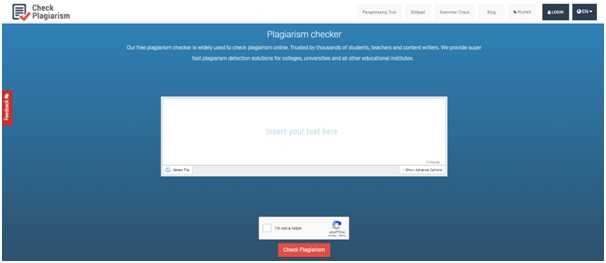
Most businesses, whether small or large and multinational, have made the jump to the internet world. The fact that the whole enterprise has moved towards the internet has led to more competition among them to gain more exposure and remain competitive in the world of marketing.
The most exposure and prospective worldwide leads can only be obtained by establishing a solid web presence not limited to a particular geographical area. This necessitates the development of many essential pillars, including SEO strategies, digital marketing campaigns, high-quality content creation, and optimization, among other things, by company owners.
For your business website to have a good reputation and gain greater outreach and exposure in the vast business world, the content of your business document must be informative, original, unique, optimized, and fresh. Business owners who fail to understand plagiarism, copying, or paraphrasing content do not comprehend what makes something authentic.
Most business owners use copied content to grab their target audience, but it’s not an authentic way to do this. So, the use of copied content has been proven to harm website rankings and reduce your targeted audience.
Listed below are some of the other consequences of using copied content and avoiding plagiarism in a business document or business website.
Plagiarism – what is it?
Plagiarism is defined as the use of other website’s content. A single plagiarised article may have a significant impact on the failure of a website. All of your project’s ideas and content must be original to distinguish yourself from your rivals to succeed in business.
If any of your business documents are found to have been plagiarised, it will have a negative impact on your professional life. You must double-check your project’s concept and other business documents regularly to ensure that they have not been duplicated. The presence of copyright content diminishes the trustworthiness of the work. As a result, all businessmen must stay away from plagiarized content.
5 best ways to avoid plagiarism in business documents

- Be clear about the concept
When you are writing a chunk of content, you have to be clear about the central concept of the entire content. It is often possible to accidentally copy ideas from authentic sources, even if you cite them accurately. Be sure that your content is structured so that anyone can recognize your thoughts from those of your sources.
If you talk about two or more people’s concepts in your document, be careful to avoid using ambiguous pronouns. So, you have to use correct pronouns in a piece of content that will be easy to understand for your readers.
- Paraphrasing & Summarizing
Paraphraser is a technique for expressing someone else’s ideas in your own words by repeating their phrases. However, changing a few words here and there in the original text does not result in a legitimate paraphrase of your content. If you want to use a proper paraphrase method, the words and sentence patterns of the source must be changed without changing the meaning of the idea.

You should also be aware that paraphrased sentences still require citation. Even though you have rewritten the ideas from another source in your own words, they are still derived from a different origin and constitute plagiarism. The fact that you are drawing less directly from other sources or decreasing the number of quotations in your material does not imply that you are lowering your quality standards. You need to use more caution while summarising the material.
On the other hand, summarization is another way to remove plagiarism from your business document quickly. Summarizing a passage is like rewriting it in your style and words to be much shorter than the original. Summary paragraphs should present the main ideas of a passage. So, in summaries, central points should be covered only.
- Authenticate the format of the business document
Uniqueness and authenticity in the structure or format of your business document are essential to avoid plagiarism from your work. It is one of the most efficient methods of preventing the use of protected content.
The format must be one-of-a-kind, visually appealing, and well-organized. There will be no grammatical errors in the paper, and it will effectively convey your point of view to the reader.
- Use of Plagiarism Checking tools
Most people are now aware of online plagiarism checker. You can use plagiarism detection tools to ensure that your business content is original and identify plagiarism instances. These plagiarism checker tools analyze your work and compare it to an extensive collection of digital resources, including publications and websites, pointing out passages that are too similar to other papers.

Before publishing a blog, an article, or any product review on your website, ensure that you verify it for plagiarism by utilizing a plagiarism checker on your computer. Using this method, you may identify any sections of your work where a quotation has been missing, uncited, or even severely paraphrased. Plagiarism checking tools give a percentage of unique and plagiarized content, through which you can quickly paraphrase those highlighted lines and avoid being plagiarized content.
- Cite your sources
You do not want to give someone else credit for your work. And, of course, you do not want Google to believe that you have copied and pasted material from another site onto your own. Whenever you are unsure about a concept in your writing, whether it was entirely created by yourself or was taken from someplace else, it is preferable to provide citations to the sources that inspired the idea.
Instead of hurting your paper by copy-pasting, this makes your documents more genuine and unique. It demonstrates that you have utilized some original ideas in your writing rather than copy-pasting. Citing sources is an excellent practice to use to prevent your company’s material from being plagiarised.
It is essential to acknowledge the original author when citing a source since it shows that you are not just copying information from the internet and making minor formatting modifications.
Sustain the concepts in your article that are solely your own and original. By citing your sources, you may demonstrate a clear distinction between your initial ideas and those that you have obtained from the internet.
Conclusion
Plagiarism in blog posts, articles, or any other document of a business website is a grave offense. Above, we mentioned five best ways to avoid plagiarism in your business document. The tips mentioned above will help to prevent plagiarism in business documents. In addition to helping make a creative, unique document for business, these tips will also help you get rid of plagiarized documents.





